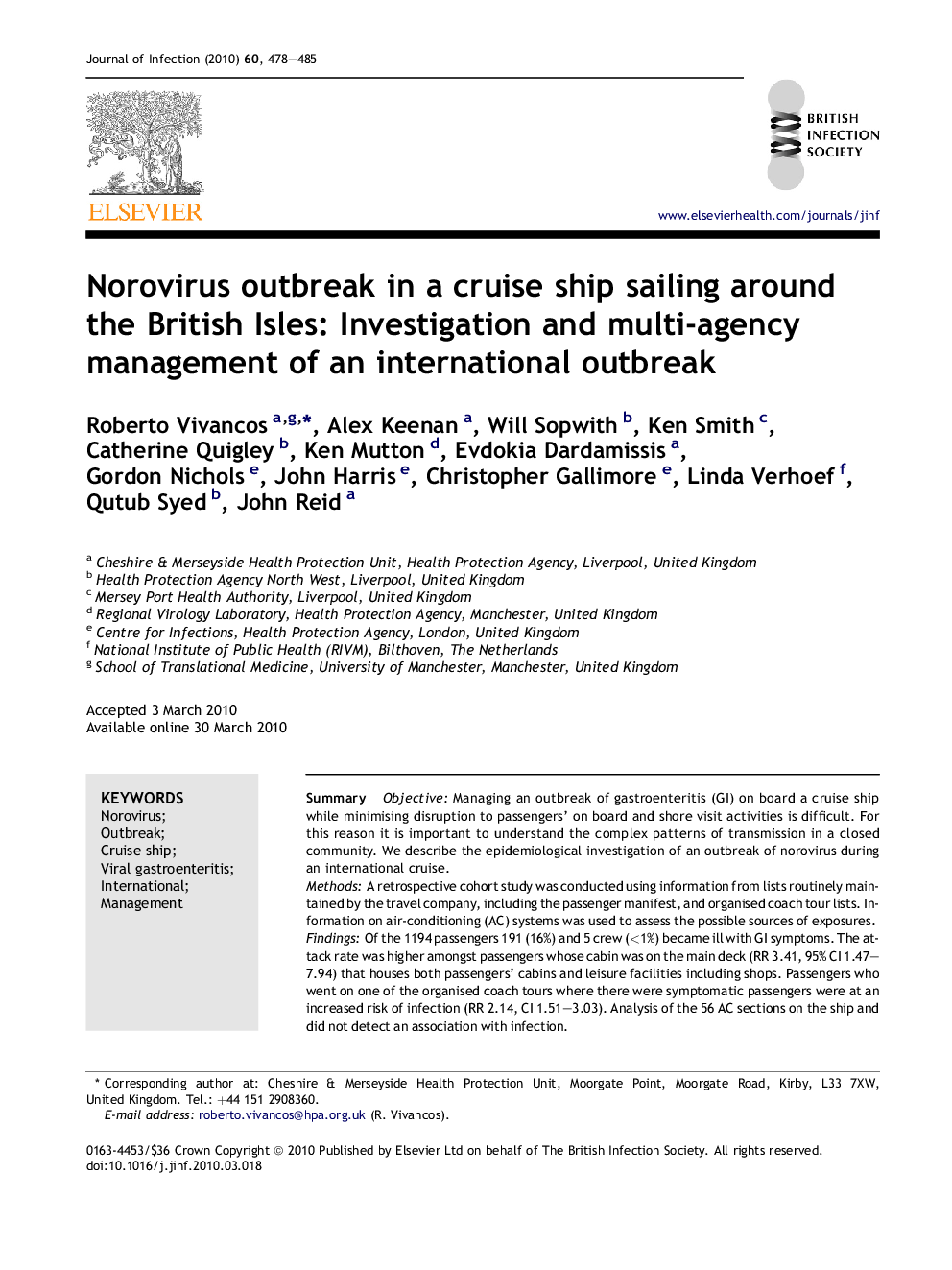| Article ID | Journal | Published Year | Pages | File Type |
|---|---|---|---|---|
| 3375943 | Journal of Infection | 2010 | 8 Pages |
SummaryObjectiveManaging an outbreak of gastroenteritis (GI) on board a cruise ship while minimising disruption to passengers' on board and shore visit activities is difficult. For this reason it is important to understand the complex patterns of transmission in a closed community. We describe the epidemiological investigation of an outbreak of norovirus during an international cruise.MethodsA retrospective cohort study was conducted using information from lists routinely maintained by the travel company, including the passenger manifest, and organised coach tour lists. Information on air-conditioning (AC) systems was used to assess the possible sources of exposures.FindingsOf the 1194 passengers 191 (16%) and 5 crew (<1%) became ill with GI symptoms. The attack rate was higher amongst passengers whose cabin was on the main deck (RR 3.41, 95% CI 1.47–7.94) that houses both passengers' cabins and leisure facilities including shops. Passengers who went on one of the organised coach tours where there were symptomatic passengers were at an increased risk of infection (RR 2.14, CI 1.51–3.03). Analysis of the 56 AC sections on the ship and did not detect an association with infection.ConclusionsPatterns of transmission of norovirus on a cruise ship are complex. Our study suggests infections are more likely among those passengers staying in areas of the ship that are highly transited or used for communal activities and more difficult to clean. Emphasis on the importance of early reporting of symptoms can help minimise transmission. Internationally agreed guidelines on the management of outbreaks on cruise ships are needed.
